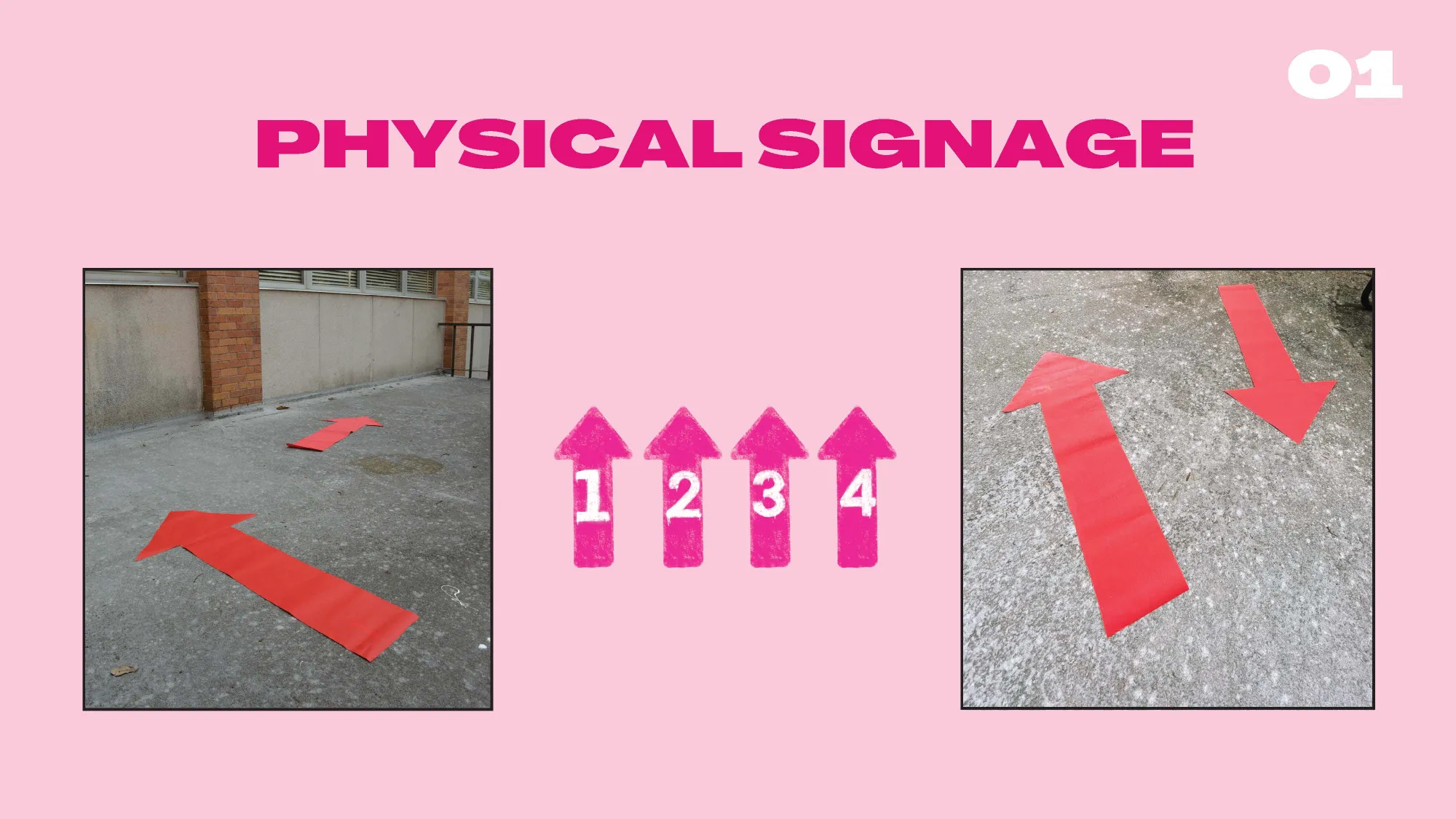Simplifying the curbside care journey
Challenge
How might we elevate curbside care beyond the norms of traditional healthcare experiences while keeping our solution flexible and scalable?
Context
Many health clinics are incorporating curbside care into their care options. In 2021, Magenta Health aimed to improve the curbside experience across its first four locations, advancing human-centered healthcare from HEB—a brand Texans know and trust.
A team of five learners in the M.A. in Design focused on Health program explored patients’ communication experiences with curbside care at Magenta Health.
Approach
Using observations and data to inform the design decision, the team created a clear and concise three-pronged communication architecture that includes physical signage, text messaging, and a high-tech kiosk.


Insights
- The need for weatherproof directional signage became clear when observing the old, weather-beaten signs, which had to be placed outside and brought in for storage.
- Many patients ignored the “call this number” sign and went inside, taking up valuable front-desk time—highlighting the need for an outdoor check-in solution.
- Given the variation in activity levels across clinics, estimates for future volume increases needed to be factored into prototyping efforts.
Outcome







Reducing clinic staff workload
Using three prototypes, the team redesigned the patient’s clinic visit—removing communication barriers that complicated workflows and confused patients.
The patient journey now begins with a simple text message that includes appointment location, date, and a map to help them navigate once they arrive. Magenta arrows on the asphalt guide the patient to a kiosk where they can check in. From there, they follow directions to a parking spot and wait to be notified when to pull into a curbside care bay.
To evaluate the impact of their design, the team proposed measuring changes in front-desk support needs, using a baseline in which 50% of curbside patients bypassed instructions and walked to the front door instead of calling.
Learn More
Find out more about H-E-B Wellness Primary Care (formerly Magenta Health).
Design Team
Bridget Dickinson
Raphael McIntyre
Surya Nair
Srichakra (Sri) Narasimhan
Amanda Wu
Project Summary
To improve the curbside care experience, students partnered with Magenta Health to redesign communication at clinic entrances. The team created a three-part system—signage, text messaging, and a check-in kiosk—that reduced confusion and staff workload. Their design aimed to guide patients smoothly from arrival to care, even during high-volume or socially distanced conditions.
Project Contributors
Magenta Health (now H-E-B Wellness Primary Care)

